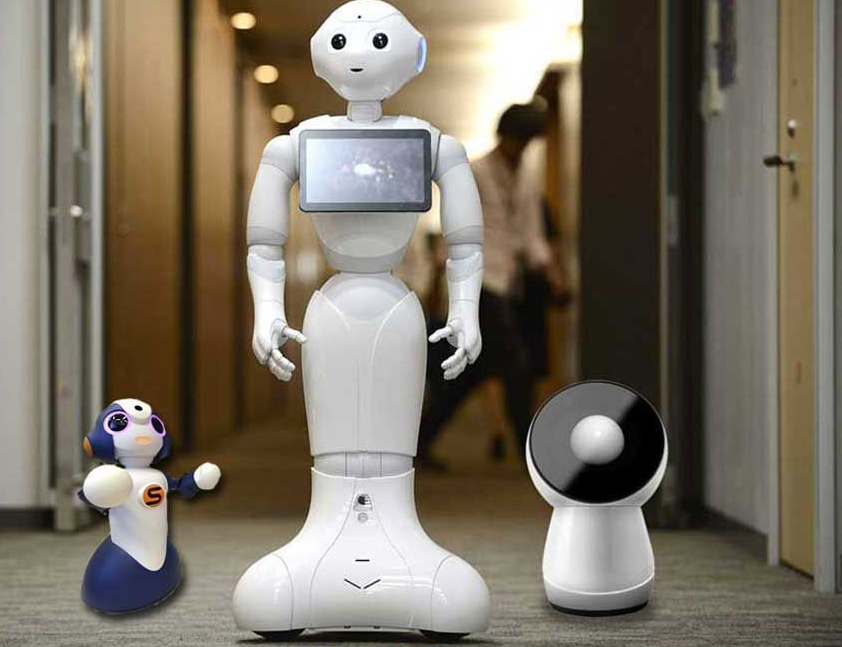South Korean technology start-up Innoplaylab is planning to join the burgeoning market for “companion” robots with a silicon pet that combines the roles of guard dog, nanny, computer, smartphone and remote controller.
The Domgy (“my dog”) unit is intended to capitalise on developments in the fields of artificial intelligence (AI), speech-recognition and autonomous driving technology and combine them with the growing market for smart home appliances and emotionally intelligent robots.
Jean Jeon, a director of Innoplaylab, told GCR that the unit had the functionality of Amazon’s Echo speaker, to which it added a range of extra abilities. He said: “It has visual and infrared sensors, it can talk and listen, it can access the internet using Wi-Fi or 4G networks, it can move around a house without bumping into things, and it will navigate to its charging dock when its battery runs down.”
It will build up profiles of people it meets regularly, it will be able to recognise their faces and voices, and it will talk to a teenager in a different way to an adult.– Jean Jeon, director of Innoplaylab
The sensors and the mobility enable Domgy to look after an empty house. If it detects something untoward, it can call the owner and send them a picture of what it’s looking at. It can use its infrared sensor and the Bluetooth protocol to control appliances such as televisions and air-conditioning units, and could turn off ovens and irons that have been left on by mistake.
Jeon said it will be able to carry out smart interactions with people as well as appliances.
He said: “It will build up profiles of people it meets regularly, it will be able to recognise their faces and voices, and it will talk to a teenager in a different way to an adult. It can monitor the health of the elderly, prompt them to take medication. Equally, it can read bedtime stories to children using its text-to-speech function, play music and dance to it, send emails using its speech-to-text and remember its owners’ birthdays.
Emotional connections
The robot is the latest entry in a rapidly growing market for domestic robots that are able to behave in a way that mimics human-to-human interaction.
According to research by Tractica, annual shipments of consumer robots (including the “service” robots that act as hoovers, lawn mowers and pool cleaners) will increase from 6.6 million units in 2015 to 31.2 million units worldwide by 2020.
As well as Innoplaylab’s product, SoftBank Robotics of Japan has teamed up with Alibaba and Foxconn to produce Pepper, a humanoid unit that is able to “perceive emotions”, and comes with a range of sonars, lasers and touch sensors that allow it to navigate a living room.
This unit has been available on a limited release basis in Japan, where 1,000 were sold in under a minute when it became available in June 2015.

Left to right, Sota, Pepper and Jibo
SoftBank has since been selling Pepper units in small batches, but only to consumers in Japan. The company has plans to launch in the US sometime this year.
Meanwhile, a team from Massachusetts Institute of Technology is working on the “friendly, helpful and intelligent” Jibo, which does not have a wheels, and French company Bluefrog is preparing to release Buddy, “your family’s companion robot”.
Then there is Sota, the unit from Japananese telecoms giant NTT and robots company Vstone. This will be able to communicate verbally, and will be able to interact with wearable devices to check a human’s blood pressure and heart rate. NTT is initially marketing this device at care facilities for the elderly.
The rise of the remote control unit
One trend that may put some wind in their sales is the growing appetite among consumers for smart home appliances. A report for banking group USB, reported in the South China Morning Post, has just predicted that China’s growing interest in smart home appliances could the market 25% in the next three years.
We’re trying to market it as a pet rather than a robot. We did a lot of work on finding a look that people would think was cute when when it is moving around your home– Jean Jeon, director of Innoplaylab
Almost 95% of Chinese consumers are either “extremely” or “somewhat” interested in buying smart home products, according to a UBS Evidence Lab survey of some 3,000 consumers.
Jeon said these kinds of robots were being helped by improvements in AI and speech recognition achieved by companies Amazon, Google and IBM (or the companies they took over).
“We use Google for voice recognition and speech-to-text,” he said, “and we’ll probably go for IBM’s Watson for the AI and Android for the entertainment functions.”
“Our first models used a dual-core processor and had two microphones, but we’re going to upgrade that to a quad core to improve image processing, and we’re going to fit five mics so that you can give the robot orders from up to 5m away.”
He added: “We think this is the only robot at anything like this price with this range of functions. It will be the only robot to have a continuous 4G connectivity. We’re converging all of that with robotic technology such as autonomous driving and sensors.”
According to Jeon, Innoplay’s target retail price is between $500 and $600, placing it in the same range as a smartphone or tablet computer. The firm is also planning to retail it through telecoms companies, in a similar way as smartphones.
“Our other selling point is that we’re trying to market it as a pet rather than a robot,” says Jeon. “We did a lot of work on finding a look that people would think was cute when when it is moving around your home – we did a lot of work on the design.”
Top image: Domgy – which means my dog in Korean (Innoplaylab)
Comments
Comments are closed.











Does it eat Kennomeat?